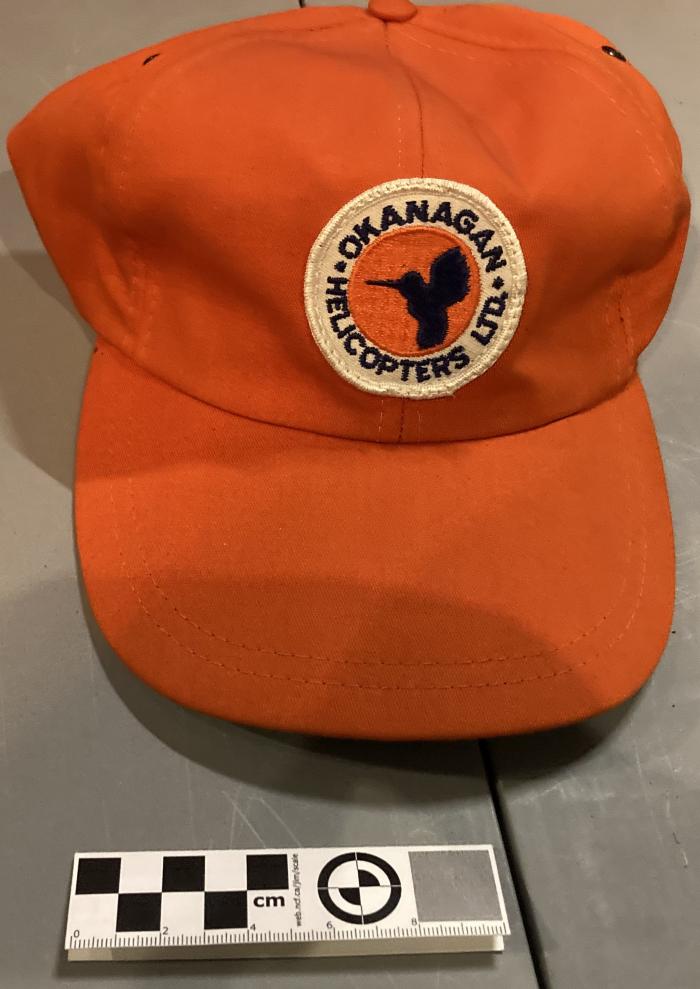Baseball Cap
Object
2024.4.34
Orange baseball cap with a logo reading "Okanagan Helicopters LTD" across the front
Okanagan Helicopter’s story is one of meteoric rise and evolution, going back to its foundation around the British Columbian Okanagan-valley in 1947 by Carl Agar, Barney Bent, and Alf Stringer, all three ex-Royal Canadian Air Force. While companies like Pacific Western and Canadian Pacific exploded out of the post-war economic-boom to new heights over the plane-market, Okanagan Air Services Limited went for the up-and-coming helicopter scene. Early operations were relatively small-jobs crop-dusting, but the owners quickly recognised the potential in more lucrative insect-spraying contracts, then in supplying aluminum-mines, then in shipping parts for the Mid-Canada warning line radar-stations, and then even further. Under the new name Okanagan Helicopters Limited, adopted in 1949, the company was the largest helicopter-operator on the continent by 1952, and soon it ran all throughout Canada, including the Yukon, followed shortly by international contracts. These needs were met primarily by the powerful Sikorsky S-55 and Bell 47, overseen by hundreds of employees, and identifiable by their distinctive orange-and-white liveries. Never an organisation to stay idle, Okanagan transitioned again over the 1970s, and Agar and Stringer resigned while the next generation acquired a series of smaller-operators, further bolstering the services. Turboshaft copters, more powerful than their piston-powered predecessors, for likewise purchased, including but not limited to Bell 204s, Bell 212s, Sikorsky S-58Ts, Sikorsky S-62s, and Sikorsky S-76s. By the dawn of the 1980s, Okanagan had long-ago outgrown its name, being the largest in Canada, much less central-BC. Thus it fell under the attention of larger-scale operators, and merged with several other helicopter-companies to become CHC Helicopters. A subsidiary of CHC still flies to Whitehorse today, but the Okanagan Helicopters Limited depicted on the hat on display is no more; it is a historic component of a much larger company playing on a vastly more expansive arena
